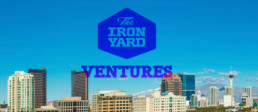Owen Carver
7 Questions to Ask Yourself Before Building a Website
Want to build a new website?
Exciting right!? Whether you're planning to hire a web designer or interested in starting a do-it-yourself (DIY) website project, having a smart approach and knowing where to start can save you time and money. We want to help you with this important and exciting process, and have written a few important things to keep in mind to help make your first steps easy and stress-free. Many people can get overwhelmed by the many different options, new terms, and sometimes complicated features they hear about when speaking with web designers. But if you ask yourself a few simple questions you can easily prepare yourself with a strong foundation of the right information to help make your next steps and discussions with any web designers much more productive and efficient.
In this post we've created a list of helpful questions to ask yourself that will help tremendously if you take a little time to answer them before contacting web designers about creating a new website or even if you want to build it yourself:
1. How will your company benefit from a new website or redesign?
- Do you want to increase revenue and online sales?
- Do you want to bring more traffic to your site?
- Do you want to integrate any new features into your website?
- Do you just want your website to be modern and mobile-friendly?
2. Who are your primary audience and target visitors?
- Do you have a younger or older audience?
- Will most of your visitors already know your brand when they arrive, or visit after only seeing an advertisement without knowing much about your brand?
- Are your visitors interested in learning something or taking a specific action?
- What action do you want first time visitors to take?
- What kinds of actions do you want returning visitors or existing customers to take?
- Do you prefer visitors to call you, book something, buy something, sign up for something, or just submit their email address?
3. What content do you need, and what content do you already have?
- How much information needs to be on your website?
- Do you know what pages you want to have, the names of the pages, and text they will contain?
- Do you have photos already, or do you mind using stock photos on your website?
- Do you have any graphical elements to add, and have they already been designed?
- Do you already have a logo designed?
- Do you need any custom graphics or icons to communicate your message?
4. Do you have your domain, hosting, or company email already?
- Have you thought of or purchased a domain for your website yet?
- Have you decided what hosting company to go with and what type of hosting you'll need?
- Do you have a company email setup with your domain name in it?
5. Have you researched what your competition is doing?
- What kind of website are they using?
- How does their content compare to what you want on your site?
- What 'calls to action' (CTA) do they use?
- What products or services do they emphasize most?
- What is the structure and sitemap of their website?
- What special features or functionality does their website use?
6. How will you market your website & drive visitors to it?
- Will you continually update your content to provide new valuable content for visitors?
- Will you use social media activity and networks to drive people to your site?
- Will you use online, print, radio, or TV advertising to drive traffic?
- Do you want to pay for Search Engine Optimization (SEO) to rank well in Google?
- Do you need traffic right away or are you happy to have traffic grow slowly as you add more content to your website or social media streams?
7. How Do You Measure Success and Optimize For It?
- Are you considering site traffic monitoring systems?
- Do you want to track ROI for conversions per advertisement?
- Will you try to track total sales, or be able to identify sales from different channels?
- Will you use outside sales and marketing subcontractors, or your own in-house team?
For measuring advertising performance and optimizing to improve it, you may want to consider strategies such as A/B testing, SEO, Content Generation, Ad Conversion Tracking, asking leads how they heard about you, using and comparing multiple channels to drive traffic from social media and online content distribution networks, in addition to traditional print, radio, & TV placement.
Don't be afraid to ask for help.
Be sure to keep these tips in mind when you're considering building your next website. You will be much more prepared if you take a few minutes to consider each question, learn what the terms mean if any are new to you, and don't be afraid to ask more questions. If you have get stuck on any of these questions, or feel want to have someone double check your answers, feel free to reach out to a professional at anytime!
All in Web Pro is here to help when you need us. Feel free to leave a comment below, or give us a call at our Las Vegas office at 702.331.0650!
Las Vegas Tech Education Schools & Resources
Is the bubble bursting? Or engulfing everything around it?
Did you know that most of the biggest tech conferences make Las Vegas one of their prime stops? The new tech and startup bubble in sin city began forming in 2012 and it hasn't stopped growing.
In 2016 Vegas had the pleasure of hosting HCM Excellence Conference, Learning Solutions: Sharing What Works, 2016 Spring CLO Symposium, DevLearn, CES, and many more in recent years including SXSW V2V and Collision Conference. The new tech conferences and resources appearing all over the place are due to an increasing appreciation in the government and business community for the many economic benefits of this fast paced growth sector.
Right now, Las Vegas is seeing a huge influx of tech related jobs; especially in green energy and the drone industry. Last year, Nevada was one of only six states to receive a two-year certificate of authorization from the FAA to test drone technologies in the state. That has brought companies from around the globe into Nevada, hoping to jump into this virgin market.
In addition to the ongoing innovations of this kind, the overall resources for growing and supporting the next generation of engineers in Vegas is covered from all angles! From high schools offering technological career paths such as the Advanced Technologies Academy and Career and Technical Academies in Clark County, to public Higher education degrees in tech from the College of Southern Nevada, CSN, Arts Institute, as well as independent training programs like Iron Yard and more.
The Money 20/20 Hackathon coming to Vegas on October 22nd to the 25th has been established as a premier event for the world’s best developers, and has set an entirely new standard for Hackathons globally. Last year’s event brought together teams that battled for $125K in cash prizes and international notoriety as they were challenged to showcase their skills and vision using the APIs, SDKs and other tools from today’s leading Payments and Financial Services Innovators.
Needless to say, the tech scene, with its opportunities for connection and education in Las Vegas are raising the bar to new levels of excitement and possibility and are destined to transfer this tourist destination city.
Las Vegas Tech Team Graduates at Iron Yard Ventures
First Hospitality Focus Tech Team Graduates at Iron Yard Ventures
Iron Yard Ventures was ranked as one of the top startup accelerator programs in the United States in both 2015 and 2016. Since 2012, IYV has invested in more than 62 early stage technology companies who have gone on to raise more than $100 million in follow-on funding. No small potatoes especially for the funded programs.
In Spring of this year, Iron Yards Ventures announced a hospitality-focused accelerator for downtown Las Vegas. During November, the team is celebrating the graduation of accelerator Batch 6 (the term for this year’s class), and credits the tech community in Las Vegas for their strong support of this program.
"So many people have been amazing in helping out our companies, but the best I think is yet to come," said Ryan Negri, Managing Director of the accelerator.
Negri points to accelerator mentor Robert Rippee, Director of the Hospitality Lab at the International Gaming Institute, as a valuable mentor to the teams in the program this fall. Rippee met with Nobal Tech, one of the batch startups. The startup creates innovative and intuitive digital interfaces to enhance customer experience and is changing the way people interact with their world.
"Robert Rippee is connecting them with the builder of the new Resorts World casino/hotel and also to the CEO at Wynn," noted Negri. "This could lead to the installation of their mirrors into over 30K rooms."
This year’s cohort has teams from all over the world. Four of the batch talented teams are local to Las Vegas, while others traveled from Atlanta, Calgary, and Johannesburg.
"Curating a diverse cohort comes natural to me, as I’ve grown up in diverse cities and have traveled the country," said Negri. "I don’t see color when I’m being pitched. I don’t hear accents when I evaluate a startup. I look at the team, and how they work together, how they treat each other, and their staff. The person is so much more important than the product. That was my hunch before the program, but the program confirmed that for me. I look at a team and ask, ‘Can this team pivot and still be successful?’"
For other investors and startup accelerators looking to increase their portfolio diversity, Negri suggests searching for underserved companies by targeting underserved cities, programs, and universities.
Choosing a Web Development Company
Unless you know exactly what you’re looking for, choosing a web developer in Las Vegas can be a difficult task. There are no licensing requirements for web developers and the barriers for entry are almost nonexistent. This has caused the web development market to become flooded with freelancers and companies of all skill levels, experience and capabilities. In this article, we’ll give you five tips for finding the perfect Las Vegas web development company for your next project.
Find a specialist
Many web developers claim that they can do it all. In reality, most web developers are primarily either graphic designers or programmers. Both of these fields are very specialized, and it’s uncommon to find people who are experts in both. When looking for a web developer in Las Vegas, we suggest asking them who will be doing the graphics and who will be providing the programming work. If it’s the same person doing both pieces, we advise paying even closer attention to their previous work and their portfolio.
Check their portfolio
A web developer’s portfolio is a good indication of the type of work you can expect from them for your own website. When reviewing their portfolio, keep an eye out for aspects that you want to be incorporated into your website. If you are looking for the latest in design trends or cutting-edge technology, look for those types of designs in their portfolio. On the other hand, if you’re looking to have a website developed that involves complex programming, ensure the developer has examples of this as well.
Will their website be SEO friendly?
In the early days of the internet, simply having a website was enough to be found by both current and potential customers. In 2016, having a website is just one aspect of your overall web presence. It’s important to make sure that the web developer will create the site with SEO (search engine optimization) in mind. This will help you increase your rankings in search engines and make it easier for customers to find you.
Long term
Another thing you should consider when choosing a web developer in Las Vegas is the scope of ongoing maintenance and the charges this will incur. It’s also important to understand at what point your initial projects ends and the maintenance phase of your relationship begins.
Communication
Once you’ve narrowed your web developer choices down, it’s a good idea to speak with the developer directly. This will help you understand how well they communicate and it’s a good indication of how they manage client relationships. It’s also one last measure of safety before you have the developer begin working on your project.
All in Web Pro is the premier web design and development company in the Las Vegas area. We focus on providing custom web design and development solutions to the Las Vegas area and beyond. Whether your project is a blog or business website, we can take your web presence to the next level.
Important Factors that Affect Your Web Design Cost
3 Factors that Affect Your Web Design Cost
One of the questions we receive a lot of is “how much will my website cost?”. This can be very difficult to answer because of the many different types of websites and time it takes to build each one. There are some major factors that can change the price of your website which we have compiled in this article:
1. The components and features you need.
Never assume that your needs are “simple” or should be cheaper than a designer’s standard rate. Some things look easy but are very complicated, while others seem like a big deal but are very easy to implement. Your site may only consist of a single page, yet that doesn’t mean it’s automatically cheaper than one with 5 or even 100 pages.
The thing is, that even if something is simple for a designer to handle it has taken years for them to learn that skill much like a doctor or attorney. Additionally, things can require custom development during construction which may necessitate additional time to either create or troubleshoot a unique component. Generally the more custom features, graphics, functionality, and components you request that are unique to your site the more it will likely cost.
2. Your designer’s skill level.
Yes, you can get a website for $150. No, it won’t be the same quality as a website that costs $1500. It’s like the difference between a bicycle and a Lexus. Both will get you where you need to go, but one is decidedly faster, provides a more comfortable user experience, and requires less effort for a user to operate than the other.
Designers who charge more are typically providing you with expertise you won’t find at a bargain rate – and in most cases, the value of the benefits will certainly outweigh the added costs. If you automatically choose the cheapest option, you risk hiring a designer who may have poor communication, an unclear process, inconsistent follow-through, no support after completion, or a sub-par or faulty end product. Don’t say we didn’t warn you!
This goes for the same as using a build-it-yourself site like Wix or SquareSpace. You can get a nice looking site but you may end up spending a hundred hours to do it and have a website that is missing important elements or that is not organized, modern, or user-friendly.
3. How demanding you are as a client.
In the interest of being honest, I’ll share a tidbit that can add to the cost of a website. If you as a client are not organized in advance and don’t have your project information like initial vision or revision request organized, succinct, and collected into one easy to read document, it will most likely slow down communication, require extra time to be spent in follow-up conversations to clarify your feedback, and will take time away from both yourself and the company you hired, ultimately delaying the final completion date of the project and potentially costing you more money.
Over time, designers learn how to identify challenging clients, and although we take many precautions to ensure our design & development processes are clear and straightforward, we also make sure that we are compensated for any extra work caused because of a highly demanding client. Please remember that designers also have lives away from our computers a healthy long lasting business to business relationship works both ways.
Like lawyers, depending on the project, graphic designers and web developers have the ability to bill clients for time spent on rushed projects that require work outside of regular work hours, or even for time needed to meet, call, or email with a client depending on the type of project and service agreement in place.
As a client the best thing you can do is allow your designer the time he or she needs to complete the list of work they currently have and not make edits in the middle of a project, especially if it isn’t going to be finalized yet. Also, it’s extremely important to follow the procedural instructions of your designer or developer. If they require all revisions or information to be submitted at that time, it’s important to spend the time necessary to have your information prepared so that no surprise changes need to be made near the end of the project that should have been brought up in the beginning.
So How Much Should I Pay?
Good Question. A good website on the low end will probably cost anywhere between $3,000 and $5,000. This is a very rough estimate for basic but good quality informational website for a business. From there the cost can go up depending on how many additional features, components, custom work, or special considerations you are requesting. If you are looking to only spend $2,000 or less, you may as well just use a do-it-yourself web editor, or use a creative solution such as forwarding your domain name to a simple business listing page like your Google Places or facebook page until you have enough time and money to invest in a professionally built website. For another rough estimate of web design costs, feel free to use this web design pricing calculator for a general example of how prices change as more features are added to a website quote.
Interested in getting some web development done? Contact our team at All in Web Pro today!
5 Steps to Take Before you Build a Website
You’ve decided to get a website. Terrific! You may be asking yourself “now what?”. It can be tempting to jump right into choosing a template or design you like and running full steam into the development process. Although this is tempting there are proven steps that will help your website development process go easier.
These five steps will ensure you have a final product you can be proud of and that accurately represents your company or organization.
Step 1: Plan Your Text
Text (or web copy) is the backbone of your website. It can attract clients if presented the right way or it can scare them off when it lacks focus or has typos. Paying close attention to what you write and how you write it can make a huge difference. Think of an average reader, then use clear and accessible language in your writing so that everyone can understand it easily.
Write the content for your pages before you contact a web developer. By writing and re-writing your content you will be able to determine exactly how you want people to see your business before any design is ever done.
Step 2: Choose a Company Name and URL
If you haven’t yet chosen a name for your company, think about what your URL will look like. You don’t want a website that reads "joesfunkyandawesomeshirts.com". Short, clear names are easier to understand and look great online. Choose a name that is simple and short with a meaning that you can brand and stick with.
Stay away from picking a company name just because it has a keyword you want to target, instead go for branding and let the keywords take care of themselves. And if you’ve already chosen the name of your company, there are still several variations of the name of your company and for the domain extension you choose (.com, .co, .vegas) that can give you the best domain name and online brand possible.
Step 3: Choose a Color Palette and Logo
Once you have a name picked you will want to decide on colors for your brand and a logo. Having a designer create your logo is well worth the effort as that can make you look much more professional than if you were to create one on your own.
Colors mean different things and talking to a designer can help you find a color scheme that works for your website and logo. Be careful to pick colors and designs that you can use for print advertising, vehicle wraps, letterhead, online media, etc.
Step 4: Choose and Use Great Photos
A business website requires different photos: photos of your products, a portrait photo for the ‘about’ or ‘bio’ section, an introductory photo for your home page, etc. Since we’re living in the age of images, you need to choose your images carefully and make sure they’re high-resolution and the best possible quality. Stock photos can work but if you have the ability, have custom photos taken by a professional photographer. Much like the logo your photos have the power to make your website stand out and impress visitors.
Step 5: Research Rinse and Repeat
This could very well be step 1, but researching is important through the entire stage of building a website. Look at competitors to see what you like and don’t like about their websites. Make lists of important pages, content, calls to action, and features that you want on your site. Ask other professionals in your field and your past clients what would like to see on your website. Getting input from trusted and relevant sources can be invaluable in the decisions you make about your website’s design.
For help with your next web project contact us at All in Web Pro at 702-331-0650!
Tech Experts Receive Awards at 2016 Top Tech Exec Awards
VEGAS INC and Cox Business highlighted Southern Nevada’s greatest technical achievements at its sixth annual Top Tech Exec Awards at The Smith Center for the Performing Arts on Tuesday, November 15, 2016.
While guests enjoyed complimentary drinks and desserts from the Four Seasons’ catering department, the evening’s emcee and Greenspun Media Group’s publisher, Gordon Prouty announced the winners. Honorees were also featured in the November 20, 2016 issue of The Sunday and November 21, 2016 issue of Vegas INC.
An independent panel of judges, many of whom received a Top Tech Exec award in 2015 determined the winners. Selections were based on factors such as recent achievements, impact on his or her company, major projects, and more.
The 2016 Top Tech Exec honorees are:
- Clifton Cole, Virtual Design and Construction Manager at The PENTA Building Group (private business)
- Daniel Chapnick, Regional Manager at iD Tech Camps (education)
- Jason Frame, Information Technology Manager at Southern Nevada Health District (government)
- Zubin Damania, Founder and CEO of Turntable Health and ZDoggMD.com (health care)
- Mary Lynn Palenik, Vice President, Office of Strategy and Planning for Caesars Entertainment Corporation (hotel/gaming)
- Randy Dearborn, Vice President at MGM Resorts International (public business)
- Armena Mnatsakanyan, Executive Director of Lutheran Social Services of Nevada (nonprofit)
Shavonnah Tiera Collins, Managing Director of RedFlint Experience Center was awarded the Community Exemplary Award. The brand new RedFlint Experience Center opened in October 2016, and seeks to provide startups, established companies, and entrepreneurs with access to new concepts, programs, and technology, as well as provide training to professionals who have fallen behind with rapidly advancing technology.
Congratulations to the award winners this year and all the nominees!
All in Web Pro Launches Vegas Visionaries
Press Release: All in Web Pro Launches Vegas Visionaries
For immediate release:
On November 1st 2016, local Web & Graphic Design company All in Web Pro.com, LLC will launch a new community video project website entitled Vegas Visionaries. The company's founder, Owen Carver, had the idea to create a website to capture the ideas and passion of local leaders and innovators who have a vision for how to make Las Vegas a more thriving and sustainable place.
The goal is to use the power of the internet to share these kinds of ideas with everyone in Southern Nevada and connect local leaders and innovators who would have never otherwise connected. It's like Ted Talks but specifically about how to make Las Vegas a better place.
Once launched, anyone will be able to visit the VegasVisionaries.co website to watch 4 minute videos of local visionaries sharing their passion, ideas, and projects they are working on to make Las Vegas a better place. The website is designed to help educate Las Vegans about the power that ideas have to transform our world when they are turned into action.
Anyone who considers Southern Nevada home and has a specific vision for how to make Las Vegas a more thriving and sustainable place is encouraged to apply to become a Vegas Visionary online on their website. Residents are also encouraged to nominate anyone in their community. Applicants and nominees must already be taking action on their vision and know what specific actions others can take to help make their vision a reality. Local residents of all ages and backgrounds are encouraged to apply! .
"In Las Vegas we have all the knowledge, skills, passion, and manpower to solve every challenge our communities face in Southern Nevada", says Carver. "Our biggest challenge is simply connecting everyone with other local visionaries and spreading stories about the many easy ways people can get involved to make their city better", he continued.
Founder, Owen Carver, is currently running for Nevada State Assembly in District 2 in the Summerlin area of Las Vegas.
Videos can be viewed on VegasVisionaries.co starting November 1st 2016 or Subscribe to their YouTube channel at www.youtube.com/channel/UC4wrACeOhr85roh4QgNRvDQ
For inquiries or comments please contact All in Web Pro at 702-331-0650 or info@allinwebpro.com. Please visit VegasVisionaries.co for more information.
Media Files
Below are web ready images and links to high resolution files below each image.
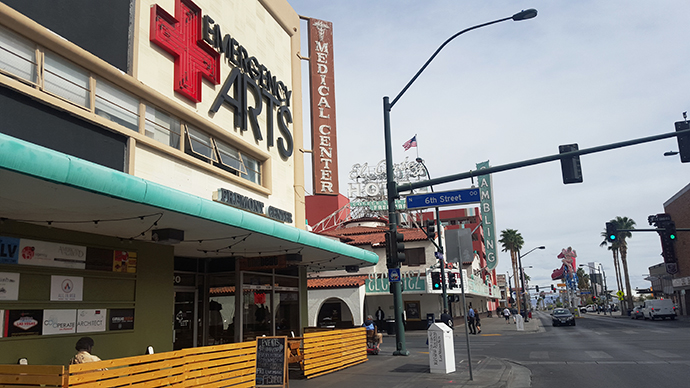
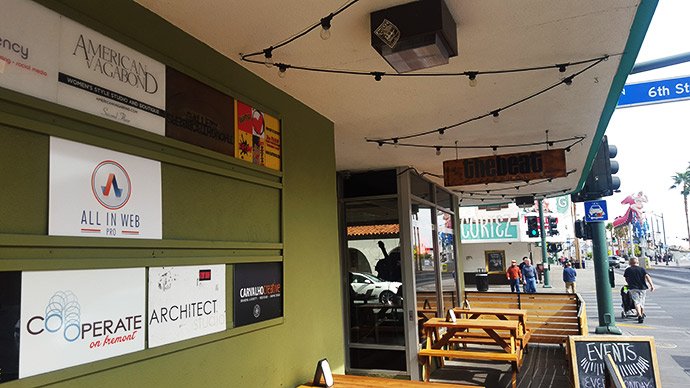
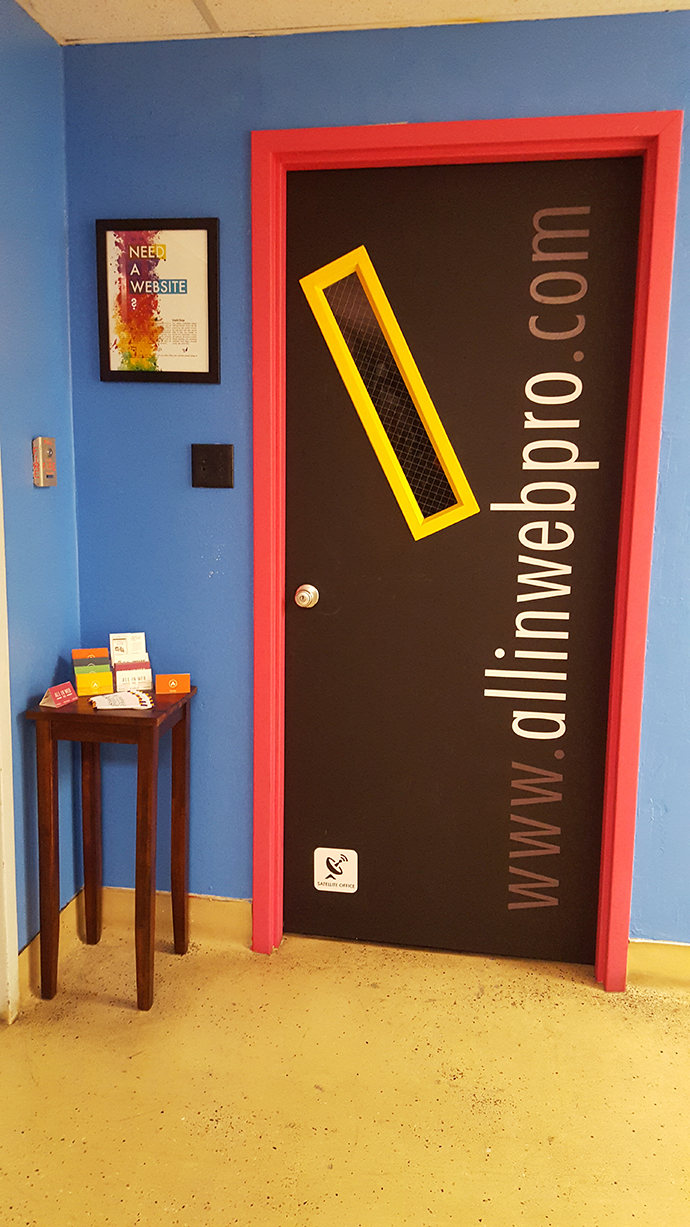
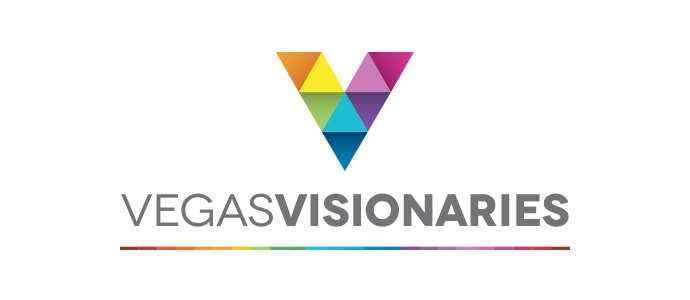
Responsive Design & Why it is Important
/** This is an example of a media query that will activate if your screen has a width of up to 680px; It will then (and only then!) apply the contained CSS. */
@media screen only and (max-width: 680px) {
.someGridElement { max-width:50%; }
}
/** The below media query only applies to view sizes above or equal to 680px width.* Setting it to 681 is so that we don’t have overlapping rules.*/
@media screen only and (min-width: 681px) {
.someGridElement { max-width:25%; }
}
Dynamic Website Application Development with Node.js
var http = require('http');
http.createServer(function(request, response) {
response.writeHead(200, {'Content-Type': 'text/plain'});
response.end("Testing!");
}).listen();
This example is about as simple as it gets, but it can get a lot more complex. Some larger websites that are built on node are walmart.com, LinkedIn, Yahoo, and even Uber.
Get Started with NodeJS:


